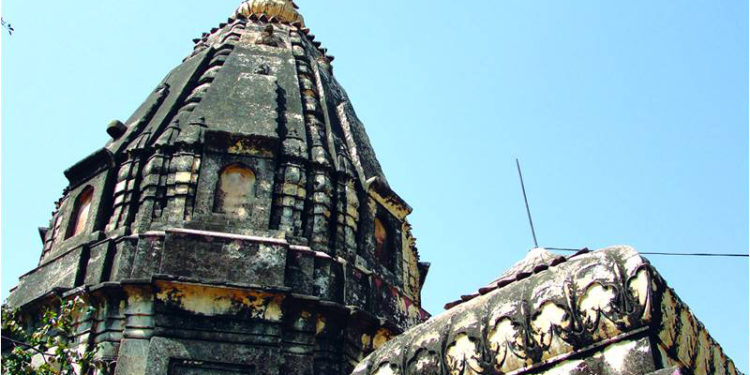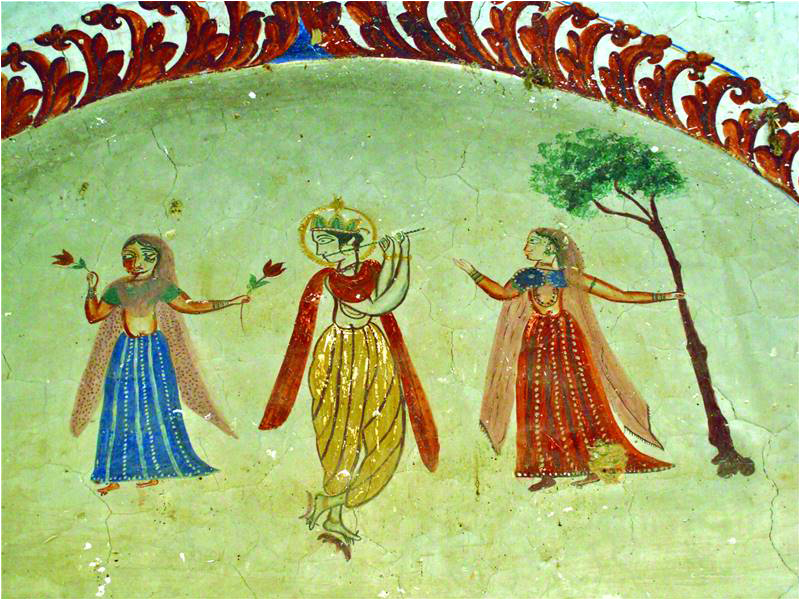
A majority of the Krishna temples in Potohar does not exist now. Those that have survived are now used as living quarters. The Krishna temple of Kabari Bazar is the only functional temple in the whole Potohar region.
Zulfiqar Ali Kalhoro
In the past, veneration of Lord Krishna was common in Potohar. Many temples were built in the towns and villages of the region where the murti of Krishna occupied the central position in the Grabhagirha of the temple. A majority of the Krishna temples in Potohar does not exist now. Those that have survived are now used as living quarters. The Krishna temple of Kabari Bazar is the only functional temple in the whole Potohar region.
Kallar Syedan, which is a tehsil of town Rawalpindi district, is host to a number of historic buildings of Hindus and Sikhs. It rose to prominence during Sikh rule – an era which left a number of imprints in the form of magnificent havelis, grand and splendid gurdwaras and small fortresses. These dot the whole of Rawalpindi district. During Sikh rule, Hindus also constructed many temples in Kallar Syedan tehsil. Some of the prominent structures of the Sikh and later the British period include Doberan Kallan Gurdwara and tank; Kanoha gurdwara; Choa Khalsa temples and gurdwara (demolished a long time ago and now only preserved in the memories of the local community); and Khem Singh Bedi haveli. Apart from Sikh- and British-period buildings, the landscape of Kallar Syedan is also marked by a number of Mughal-period monuments. The most prominent Mughal monument in Kallar Syedan is Shah Bagh Baoli (a stepped well). Like the Mughals, the Gakhars, who were once lords of Potohar, also erected many monuments. Dhangali in Kallar Syedan is a most significant village where there are several monuments which reflect the public identity of the Gakhar community.
The theme of Gajendra Moksha is repeatedly represented in Hindu temples of Potohar
The most prominent Hindu temple in Kallar Sydan is devoted to Lord Krishna. The Krishna temple, which overlooks a Nullah in Kallar Syedan town, dates back to the Sikh period. It is octagonal temple constructed on an octagonal raised platform. The distinctive features of the temple are kiosks which crown the corners of the platform. Corner kiosks are the peculiarity of this temple – which are not to be seen elsewhere in Potohar region in Punjab.
The corner kiosks of the platform impart beauty to the structure. All the kiosks were decorated with floral designs which have now disappeared. It seems that images (murtis) of other Hindu deities might also have been placed in these kiosks. Apart from corner kiosks, the mandapa (closed or open pillared hall preceding inner sanctum) is another peculiarity of temple architecture in Kallar Syedan tehsil. There are quite few temples in Potohar which have mandapas. There also exists a Samadhi close to the temple.
There are stairs to the eastern side of the platform of the Krishna temple which lead to the main mandapa of the temple. The mandapa is crowned with a dome which from the inside is adorned with paintings. On the northern wall of the mandapa is found a painting of Krishna and Radha. Also, Krishna is shown playing a flute in the company of gopis. This depiction of Krishna playing the flute with the gopis (cow-herding girls), one on each side of him, is painted on the northern wall of the mandapa. On the southern wall is a representation of Gajendra Moksha (the liberation of the elephant) in which a sea monster is shown to have held the elephant by one of its feet. Lord Vishnu is also shown having reached the scene, mounted on his vihana (vehicle) Garuda to save the elephant. This theme of Gajendra Moksha is repeatedly represented in Hindu temples of Potohar.

On the eastern wall of the mandapa, one finds a painting of Vishnu which shows him reclining on Shesha (Sheshai Vishnu).
The grabhagriha of the temple is replete with the stories of Krishna. According to Hindu beliefs, Krishna is the eighth avatar of Lord Vishnu. During his childhood he was lively and mischievous. He has been portrayed as having different personalities, for example, a god-child who is constantly involved in practical jokes, a god who is renowned for his dalliance with cow-herding girls (gopis), a pastoral deity who plays a flute with magical effect, luring the unwary certainties of settled life, and a god who controls the snake deities.
The temple is decorated with Krishna Lilas derived from the Bhagavata Purana and Gita Govinda. In one of the panels, there is a story regarding his birth. On another panel, one finds depictions of Krishna with Radha, who is holding out a rose flower towards him. One of the panels shows a Lila of Krishna that brings out his childish pranks. In this panel Krishna is shown stealing the clothes of gopis who were bathing in the waters of the Yamuna River. After stealing the clothes, he climbs the lofty branch of a tree, hangs their clothes there and asks them to come and take them back. The Gopis are seen beseeching him for their clothes. On still another panel, he is depicted dancing with the Gopis. In another panel Krishna is depicted extracting a toll from the Gopis of Brij. These gopis were selling butter to the court of Kansa at Mathura for his use and for his demons – depriving the youth of Brij. Krishna demanded a share of it, which is known as the Dana Lila of Krishna.
On the western wall of the sanctum, one finds depictions of Lord Shiva and the goddess Parvati who are busy preparing bhang, a psychoactive drink made from cannabis. Bhang was a favorite drink of Shiva. For his part, Shiva is shown typically unclothed, with his hair worn in dreadlocks and a snake as his garland. Just above this panel is another depiction of Shiva. He is shown sitting on a lion pelt and carrying a trident in one hand and a rosary in the other. A devotee is also shown approaching Shiva.
Moreover, on the western wall of the grabhagriha many panels depict Ganesha, Rama, Krishna and Hanuman respectively. In one of the panels, Ganesha is shown with his attendants or perhaps with his wives. Close to this is another panel which depicts Krishna with gopis in Gopivallabha posture – ‘beloved of the gopis’. On the northern wall, one finds a depiction of Rama, Lakshmana and Sita whereas Hanuman is shown touching the feet of Rama. Close to this depiction is a panel representing Hanuman carrying a mountain in one hand a gada (club or blunt mace) in the other.
The Krishna temple of Kallar Syedan, which can be a potential tourist site, lies in a bad state of preservation. The most precious mural paintings should be preserved from further decay. Some of the paintings in mandapa have been whitewashed. There is an urgent need to preserve these fabulous pieces of art for future generations.
____________________
 Dr. Zulfiqar Ali Kalhoro is an anthropologist and has authored 12 books: ‘Symbols in Stone: The Rock Art of Sindh’, ‘Perspectives on the art and architecture of Sindh’, ‘Memorial Stones: Tharparkar’ and ‘Archaeology, Religion and Art in Sindh’. He may be contacted at: zulfi04@hotmail.com
Dr. Zulfiqar Ali Kalhoro is an anthropologist and has authored 12 books: ‘Symbols in Stone: The Rock Art of Sindh’, ‘Perspectives on the art and architecture of Sindh’, ‘Memorial Stones: Tharparkar’ and ‘Archaeology, Religion and Art in Sindh’. He may be contacted at: zulfi04@hotmail.com
Courtesy: The Friday Times Lahore